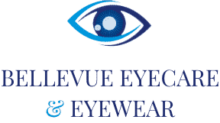Clear vision and healthy eyes are important not only to a child's overall health and well-being, but also directly linked to academic performance in school. While vision screenings given at a child's school each year may identify children who are at risk for problems with their vision, vision screenings do not test the overall health of the child's eyes. A professional eye examination, performed by an optometrist, tests vision while also evaluating the child's eyes for more serious conditions and diseases.
Common Pediatric Eye Conditions
In addition to detecting more routine vision problems, such as myopia (nearsightedness), hyperopia (farsightedness), and astigmatism (abnormal curvature of the cornea), comprehensive eye examinations check for common childhood conditions such as:
- Amblyopia (lazy eye)
- Strabismus (crossed eyes)
- Glaucoma
- Cataracts
These conditions are often present at birth as a result of genetic factors, and should be treated early to reduce the risk of complications. Treatment may include glasses to improve focus, eye exercises to correct improper vision habits, eye patches for amblyopia, or eye drops for dryness, inflammation, or infection.
The Pediatric Eye Examination
A comprehensive eye examination is essential in the diagnosis and treatment of vision problems, injury and disease. Early detection allows treatment to begin before the child experiences difficulties in school due to poor vision, and before any permanent damage occurs.
Children's eye examinations usually include tests for the following:
- Visual acuity
- Eye tracking
- Binocular coordination
- Focusing skills
- Dyslexia
- Color blindness
- Peripheral awareness
- Hand-eye coordination
Depending on the age and reading ability of the child, various diagnostic charts and tests are employed by the optometrist.
Diagnostic Tests Used in a Pediatric Eye Examination
The child's vision may be assessed using the traditional eye charts for near and distant vision, or special charts for young children, using pictures instead of letters. Other tests that may be administered include:
- A visual field test
- Dilation
- Slit-lamp examination
- Cover test
- Retinoscopy
- Refraction
Each test is designed to test either visual acuity or the health of various parts of the eye. Using these tests, our optometrist is able to assess whether corrective lenses are necessary to improve vision or whether there is any eye disease or underlying condition that requires treatment.
After a Pediatric Eye Examination
After the eye examination, most children do not require any further treatment. For those for whom a diagnosis is made, a treatment plan will be developed that may include:
- Prescription for eyeglasses
- Recommendation that sunglasses be worn
- Medication for inflammation or infection
- Wearing a patch on the more functional eye (for amblyopia)
- Vision therapy for weak eye muscles
- Surgical repair (rarely)
Eye examinations are important because they can detect underlying conditions that the child and parents may not be aware of, catching the problems at an early stage so they can be effectively treated before any damage to vision occurs. Such examinations can also test for dyslexia and other disabilities that may affect the child's ability to learn and perform well in school. Children with dyslexia have trouble visually processing letters and must work harder than other children to read. Such children usually require some early intervention so they do not fall behind their peers.
While all children's eyes are screened shortly after birth, parents should make sure that their children have regular eye check-ups as they grow to ensure ongoing eye health and proper vision.

